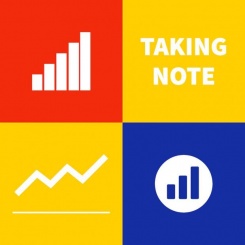Parental Responsiveness During Musical and Non-Musical Engagement in Preschoolers with ASD
Olivia Boorom
August 19, 2020
https://www.sciencedirect.com/science/article/pii/S1750946720301318?casa_token=4MOoa1_UcF8AAAAA:K6UMZer4UniWyCESqEZQFmXlA-dylttRQ3XYRGQoibl_j_5hdPV9C7364atmYQIQhuiDsJ9a
Musical play is a natural and common form of parent-child play, which is an important avenue for supporting social development in children with autism spectrum disorder (ASD). As a familiar, reinforcing, and predictable activity, musical play may support children’s attention to play activities and provide parents with a familiar and accessible context to promote parental responsiveness. However, musical play may also impede play interactions due to its sensory and repetitive components.
PRESS-Play: Musical Engagement as a Motivating Platform for Social Interaction and Social Play in Young Children with ASD
Miriam D. Lense, Stephen Camarata
June 29, 2020
https://journals.sagepub.com/doi/10.1177/2059204320933080
Musical experiences are ubiquitous in early childhood. Beyond potential benefits of musical activities for young children with typical development, there has long been interest in harnessing music for therapeutic purposes for individuals with autism spectrum disorder (ASD). However, there is debate as to the effectiveness of these approaches and thus a need to identify mechanisms of change (or active ingredients) by which musical experiences may impact social development in young children with ASD.
Musical Activities to Support Parent-Child Relationships
Miriam Lense
April 2, 2020
https://www.arts.gov/art-works/2020/taking-note-musical-activities-support-parent-child-relationships
We shared about Musical Activities to Support Parent-Child Relationships on the NEA Art Works blog! For suggestions of music activities to engage in at home, check out the Home Toolkit from our Serenade parent-child music program: http://serenademusicclass.org/home-toolkit/
You'll find video models, visual supports, and strategies for making the most of music time at home.
Commentary on “Interprofessional Education of the Next Generation of Musician-Scientists through Music Cognition Research Training"
Miriam Lense
February 14, 2020
Commentary on “Interprofessional Education of the Next Generation of Musician-Scientists through Music Cognition Research Training: An Innovative Platform for Health Professions and Biomedical Research”: Connections to the VUMC National Endowment for the Arts Research Lab
Miriam Lense, PhD, Co-Director, Vanderbilt Music Cognition Lab
VUMC NEA Research Lab, Project Director
Summary of "The Visual Music of Synesthesia"
Meredith Watson, Research Analyst, Vanderbilt Music Cognition Lab
July 1, 2019
Dr. Polina Dimova, scholar of Russian and European literature, music, and visual art, was the guest speaker at the April 2019 Music Research Forum. Dr. Dimova presented on modernist artists’ experience and fascination with synesthesia -- the phenomenon of mixing the senses (e.g. perceiving sounds as colors). Dr. Dimova presented examples from the work of artists such as Annie Besant, Wassily Kandinsky, and Frank Kupka, who are all thought to have been synesthetes.
Reflections on the Synesthetic Experience in the Music of Richard Wagner
Youjia Wang, Undergraduate Student (Neuroscience, Music), Vanderbilt Music Cognition Lab
July 1, 2019
Commonly hailed as the “King of Opera”, Wagner is best known for his contributions to the operatic tradition. He really sought to push opera to the next level. He coined the term “Gesamtkunstwerk” or “total art work” to describe his vision for what opera is meant to be. To Wagner, the opera is supposed to be a comprehensive form of art that seamlessly blends together visual art, drama, and music. He tried to tie the music in his operas directly to the story and the events on stage.
